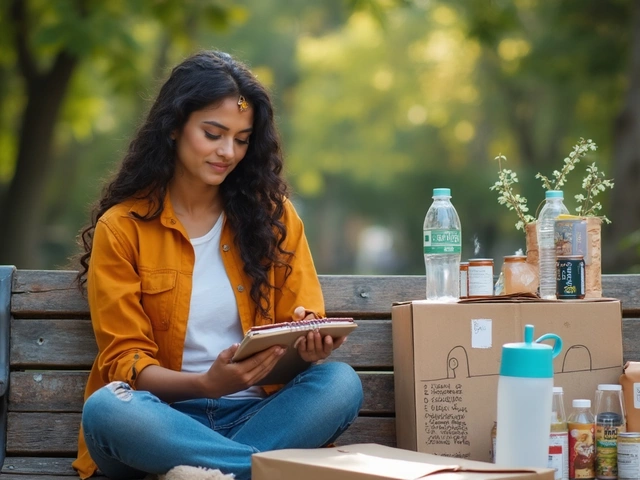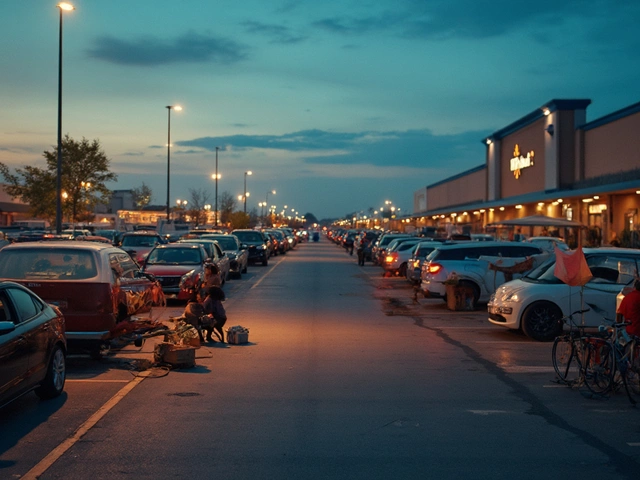Peanut butter jars tossed out, razors causing stress, and that unused tube of mouthwash left at the bottom—it sounds harmless, right? Wrong. The truth is, many of us stuff homeless care packages with things we assume would help, but those choices can trip people up or, worse, even put them at risk. This isn’t just about being thoughtful. The wrong items can have real consequences—think dental emergencies and allergic reactions—so being intentional makes every bit of kindness actually count.
The Problem with 'Helpful' Donations
We've all seen lists about what you should give, but let's flip the script: what shouldn’t make it into those care packages? Food safety tops the list, and here’s why—it’s easy to forget that people living without refrigeration or cooking space can't use perishables or meals that need special prep. That power bar you love? If it contains nuts, it could cause a bad allergic reaction. Jars of peanut butter and canned items with no pop tops are tough to open without kitchen tools. While granola bars, protein snacks, or instant noodles seem handy, many unhoused people live with dental issues, so anything rock hard or sticky can actually hurt.
Hygiene products also get tricky. Aerosol deodorants, for instance, can be dangerous in the wrong hands and hard to use discreetly. Big bottles of mouthwash often contain alcohol—at best, they’re impractical, at worst, they become health hazards for folks battling addiction. Razors and feminine hygiene items like tampons without proper packaging can lead to infections or become risky if someone doesn’t have regular access to clean water. Even soaps or hand sanitizers with strong scents might trigger allergies or migraines.
Then come the clothing items. Second-hand socks and shoes seem thrifty but can carry fungus or bacteria (imagine foot infections for people on their feet all day). Used underwear? Just a hard no. Even things like scarves and hats, if they’re knit with itchy wool or have strong odours from perfume, end up left behind in shelters. The same goes for heavy blankets that are tough to carry or clean. Careless clothing choices can pile on, literally and figuratively.
Why Not All Food and Drink Are Equal
If you haven’t lived without a kitchen or even a kettle, it’s easy to miss the challenges. Imagine getting a package filled with canned beans (with no pull tops), dry pasta, or condiments—from a cold park bench or under a bridge, there’s just no way to use these. Cheese sticks? They’ll spoil in hours when there’s no fridge. Granola bars with nuts, or sweets with hard caramel, become little landmines for people with broken teeth or dentures, which is more common than you might think. In several Auckland shelters, staff say more than half their residents have significant dental problems and are wary of hard or chewy snacks.
Beverages can be just as problematic. Bottled water is gold, but skip energy drinks, which may impact those with heart issues or mental health conditions. Drinks with caffeine or sugar can cause spikes and crashes—unstable blood sugar can really mess with someone’s day if they don’t eat regular meals. And don’t ever toss in alcohol or anything that could be mistaken for it. Sound obvious? You’d be surprised how often this happens with mini festive bottles, especially after Christmas.
Fussy packaging trips people up, too. Single-use packets (tiny jams, soy sauce, even those fiddly cups of apple sauce) seem cute but become waste without spoons or can openers. If food needs to be mixed with hot water, it’s probably useless. Ready-to-eat is always the safest bet, and packaging should be easy to open without tools.
| Food/Drink | Why It’s Problematic |
|---|---|
| Canned beans (no pop tops) | Need a can opener, can’t access |
| Jars of peanut butter | Allergy risk, tough to use solo |
| Energy drinks | Bad for health, unstable blood sugar |
| Cheese sticks, dairy snacks | Rapidly spoil without fridge |
| Granola bars with nuts | Dental issues, allergy risk |

Personal Care Products: Hidden Hazards
The hygiene aisle feels full of good ideas—until you remember the context. Large soap bars, for example, are clunky to carry, impossible to use on-the-go, and attract bacteria if tossed in a backpack. Aerosol deodorants can be used as inhalants, posing addiction and safety concerns. Liquid hand sanitizer containing alcohol becomes a temptation for those fighting addiction; in fact, several local Auckland outreach groups specifically request alcohol-free varieties only. Mouthwash falls into the same trap: most affordable brands are alcohol-based, so safe versions are rare and expensive.
Razors, especially disposable ones without protective covers, are easily lost in bags and pose injury risks. Without clean water, shaving is also much more likely to cause infections. Menstruation care deserves extra attention, too. Pads are usually a safer bet than tampons, which require more regular changing and better hygiene than many can reliably manage. Again, scented versions can cause irritation, and if someone lacks privacy, bulky packaging makes them hard to carry or use discreetly.
| Product | Potential Issue |
|---|---|
| Bar soap (large) | Heavy, tough to keep sanitary |
| Aerosol deodorant | Can be abused, hard to transport |
| Alcohol-based mouthwash | Health risk for some users |
| Disposable razors | Injury risk, infection concern |
| Scented tampons | Irritation, harder to use, infection risk |
Dental care also gets tricky. Toothpaste is usually a safe bet, but oversized tubes are tough to keep clean, and not everyone on the street can brush regularly. Consider travel-size packs instead. Fancy toothbrushes are nice in theory, but plain, soft-bristle versions are the safest pick. Skip fancy floss picks which can break or go unused—classic, waxed floss is less likely to get gunked up in someone’s bag.
Common Mistakes and Better Alternatives
Let's be honest: too many kits brim with well-meaning but wasteful stuff. Hotel shampoos leak. Travel sewing kits? Who has time to sew in the rain? Deep-winter gloves in a New Zealand summer will never get used, but extra socks (brand new and in sealed packaging) always disappear first at outreach events in Auckland. The point is, if it's not useful right now, it's dead weight. Anything fragile, quick to expire, or needing a charger (really—phone chargers are often included, but most can’t keep them, let alone use them without a safe plug-in spot) just ends up tossed.
Money or gift cards feel tricky, but for some, giving small denominations to local cafes or supermarkets (never larger sums or anything that could be traded for alcohol/cigarettes) can make a difference without putting someone in a risky spot. But, it really comes down to communication: most organisations working with Auckland’s homeless have direct lines to what’s needed each season. That’s where the clever donors look—join a local Facebook group or just ask at your nearest support centre.
Want a rule of thumb? Focus on single-use, easy-to-carry, multipurpose items. Wet wipes beat big bottles of soap. Ponchos trump umbrellas (which get lost or break fast). Pre-packaged, soft snacks and water are always welcome. Don’t forget the personal touch—a handwritten note or even just a smile can mean more than you think. So before you buy anything in bulk, ask yourself, "Will this make days easier, not harder?" That one check can save a world of trouble—and guarantee your care package delivers real comfort.







